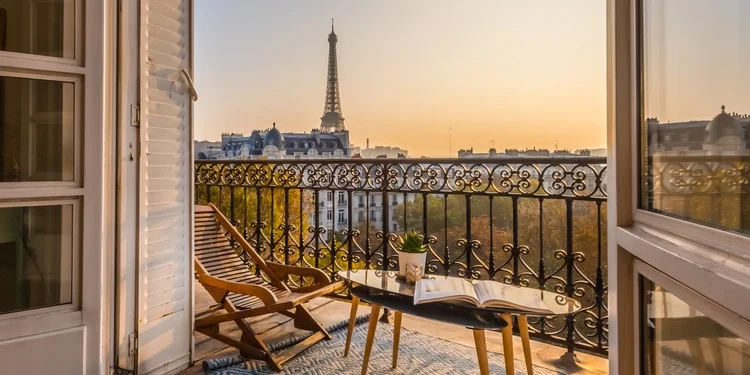Back in Paris now to enjoy the holidays with our children and granddaughter… all of whom call the City of Light home… I’m reminded of all the reasons this is my favorite place on Earth.
What is it about life in Paris that I find so rewarding?
Central historic Paris is an open-air museum.
The heart of the City of Light is a never-ending feast for your heart, your mind, your body, and your soul… especially this time of year when every street corner and shop window is adorned with white lights and overhung with evergreen boughs.
Café afternoons and Michelin-starred nights… gallery openings and museum exhibitions… seasonal celebrations and centuries-old festivals… bookstores and antique shops… luxury brands and farmers markets… fashion weeks and dance clubs… conversation groups and cooking classes… live theater… live music… movie cinemas showing first-run and foreign flicks (in English)… an active artist community… specialty food shops… spas and salons…
All in a setting of architectural delights and historic landmarks… shady squares and well-tended parks…
Hands down, no contest, in so many ways, Paris is the best place in the world to seek out what qualifies for many as a rich and full life.
“Where did the money come from to create all of this?” I once asked a Parisian architect friend.
“France has always been serious about collecting tax revenues,” Francois told me.
“Starting in the 16th century and continuing until the French Revolution, the country took a privatized, entrepreneurial approach,” he continued.
François went on to explain how, starting in the 1500s, France farmed out tax collection to private individuals who bid for their positions.
In exchange for their concessions, these citizen tax collectors paid fees to the king. Whatever each collected beyond the fee he’d agreed with the crown was his to keep.
As the country and its population grew, each collector found he was unable to cover his entire territory effectively alone and so farmed out pieces of it to subcontractors, creating, over these centuries, an early tax-collection Amway.
For a time (until Louis XVI and his wife found out what happened when the tax monies stopped flowing), both the tax collectors at the tops of these pyramids and the king himself amassed abundances of capital, some of the greatest fortunes of Europe for the period.
We won’t concern ourselves now with how these folks, both the citizen collectors and the kings they collected for, got their gains but with what they did with them.
They set out, each, to build ever-bigger, ever-grander homes, palaces, parks, and monuments.
It was a golden age of construction, when much of what today is considered the heart of classic historic Paris was conceived and commissioned. This was when the Louvre became the place we recognize today and when as many as 2,000 hôtels particuliers were built. These private mansions were the town houses of the country’s richest folks, each keen to show the others how much he was worth. About 500 hôtels particuliers remain standing today.
All this construction required skilled labor, and the most skilled labor of the time, from all across Europe, came to Paris. The best craftsmen of the age sought out and made their way to the French capital knowing that there they could be paid top dollar to ply and perfect their trades. They worked, over two-plus centuries, to build the Paris of the 1st through 8th arrondissements, the heart and soul of the City of Light. These architects, cabinetmakers, and stonemasons created a stage that remains, today, in many ways, unrivaled.
I’m no fan of taxation, but I appreciate the legacy those tax francs from centuries ago have left us.
Specifically, what do I enjoy most when at home here?
If I had to make a short list of my top favorite places to visit in Paris… this’d be it…
#1: Notre-Dame de Paris
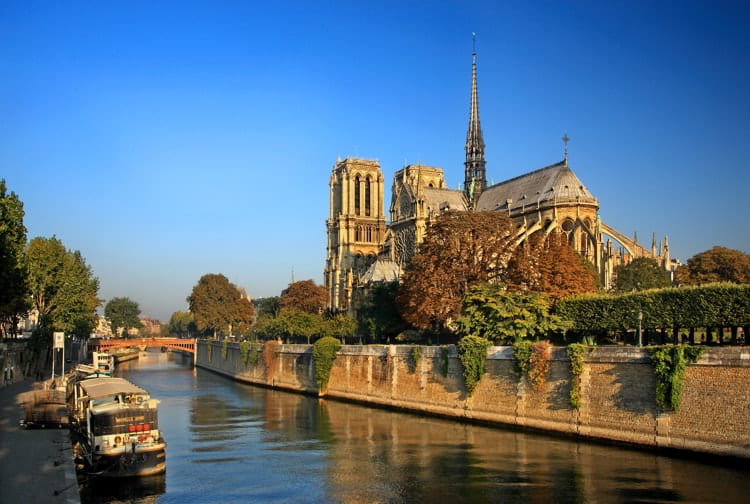
Our Lady of Paris Cathedral is on everyone’s top-sights-in-Paris list. You should see this iconic Gothic church from the parvis in front, you should tour inside, and you should climb the 387 stone steps of the narrow staircase to appreciate the structure’s famous gargoyles up close.
However, my favorite way to see Notre-Dame is from behind. Travel the Quai de la Tournelle to the Pont de l’Archevêché, then turn around and look across the Seine for the most romantic perspective of one of history’s greatest architectural achievements.
My favorite Notre-Dame experience, though, is cathedral-adjacent…
I’m speaking of a picnic on the Square du Vert-Galant.
Some of my best Sunday afternoons in Paris have been spent on a blanket in this little park with a few friends, a bottle of sparkling wine, a loaf of baguette, a wheel of brie, and Notre-Dame just a few skips away…
#2: Musée Carnavalet
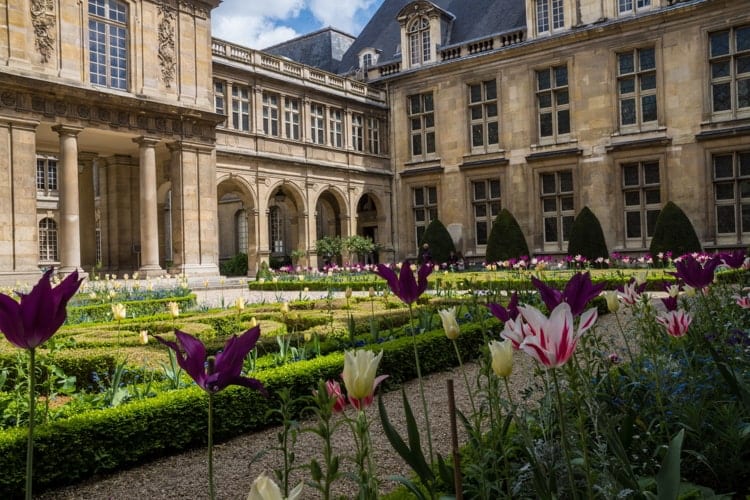
My pick for best museum in Paris, Carnavalet is a museum on Paris. Occupying two mansions in the Marais district, the Hôtel Carnavalet and the former Hôtel Le Peletier de Saint-Fargeau, it’s not only what’s housed in these 100 or so rooms, it’s also the rooms themselves that are worth seeing. This is an architectural and an historic treasure that also feels like a decorator’s show house, showing off the best of art and interior design from the 17th to the 20th centuries.
Allow time to enjoy the gardens, too, as well as the surrounding neighborhood, which is lively and full of local color.
Should you be in the city as a new expat rather than a tourist, note that the best place in Paris to shop for white china is just down the street from the Carnavalet. You’ll find La Vaissellerie at 92 rue Saint-Antoine.
Bonus trivia: While most Paris museums have free days every week or month, admission to the Carnavalet is free every day.
#3: Place des Vosges
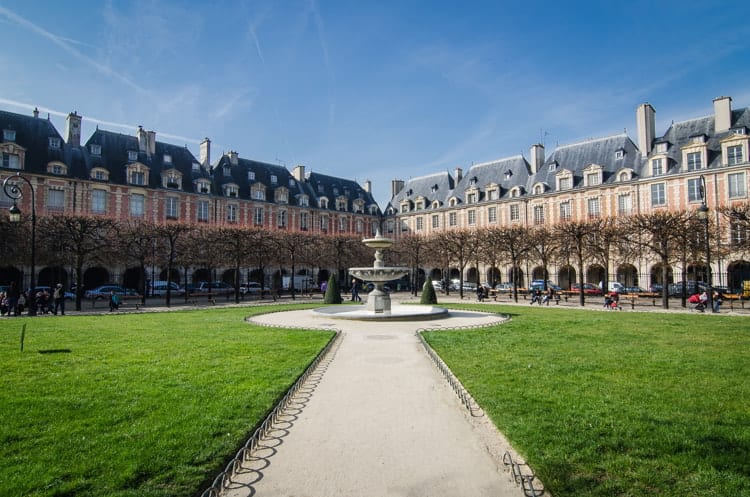
This is the oldest planned square in Paris, the first formal development in history, and the prototype of all European city squares to come.
If you appreciate classic architecture, you’ll delight in an afternoon stroll beneath the vaulted arcades of the Place des Vosges.
When we lived in Paris, I would meet a dear friend, a Parisian architect, here often. We’d take a table outside at La Place Royale, where we’d sit sipping champagne and watching the Parisian passersby while François would remind me of the history of this special spot.
#4: The Louvre (and its gardens)
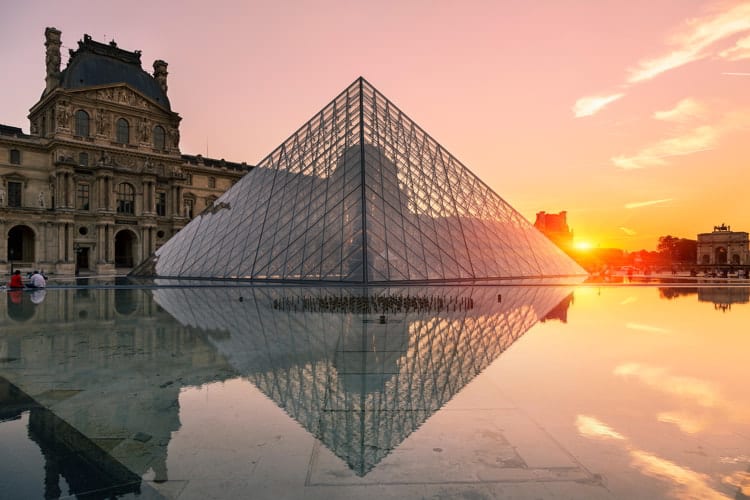
If you’re going to tour the museum itself, engage a private guide. This is one of the world’s biggest museums, displaying 70,000 works of art across 650,000 square feet of gallery space.
It’s also the most trafficked museum in the world, receiving 8.8 million visitors annually. Some hot summer afternoons it will feel as though all 8.8 million are in the museum at the same time with you.
So time your visit carefully and, again, invest in a private guide who can lead you through these halls efficiently.
Or skip the Louvre itself altogether. More pleasant can be a walk from the central square courtyard of the museum, through the triumphal Arc du Carrousel, and then on through Queen Catherine de’ Medici’s Jardin des Tuileries.
From the Tuileries you can carry on straight to Place de la Concorde (where Louis XVI was “chopped,” as my son, 4 years old when we moved to Paris, used to put it) and then, if your legs are up for it, continue down the avenue des Champs-Élysées all the way to the city’s better-known triumphal arch, the Arc de Triomphe de l’Étoile.
When I was living and working in Paris the first time (about 15 years ago), my daily commute took me through the Tuileries gardens. In every season, the walk was a highlight of my day. In spring, children float small sailboats in the ponds. In summer, tourists crowd the paths and the cafés. In autumn, the ground is covered with the leaves of the rows and rows of shade trees. In winter, I’d have the place nearly to myself each early morning and every early-dark afternoon.
#5: Shakespeare and Company
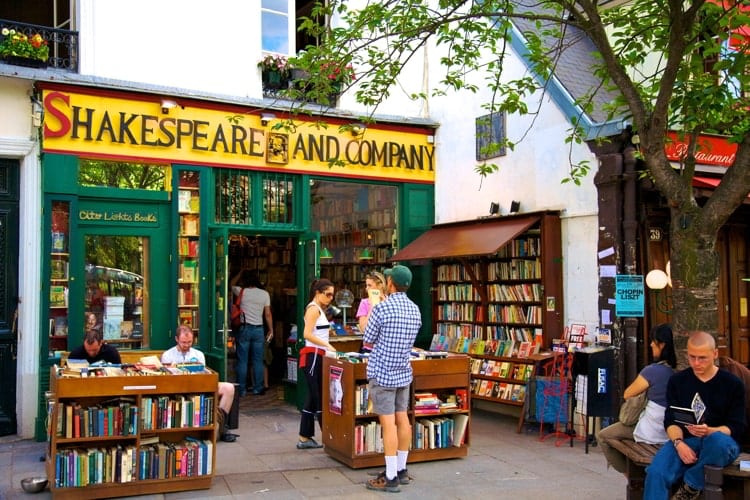
The best place in Paris to shop for English-language books is W.H. Smith on rue de Rivoli. When we lived here, my children and I would make a Sunday afternoon of an outing to W.H. Smith at least once a month.
However, the best place to experience books is Shakespeare and Company, the iconic bookstore on Paris’ Left Bank originally opened by American expat Sylvia Beach. The store closed during World War II and was restarted in its current incarnation in 1951 by George Whitman, whose daughter Sylvia (named after Beach) runs things today.
Generations of writers have found a Paris home in what is likely the most famous independent bookstore in the world thanks to Ernest Hemingway, who made his love for the place plain in his ode to Paris that he called “A Moveable Feast.”
Bonus trivia: Paris’ Kilometer Zero sits right across the Seine in the courtyard of Notre-Dame, but Shakespeare often commandeers the term, even using it on their merchandise, as Kilometer Zero was also the name of a literary journal the book shop once published.
#6: Café Louis-Philippe
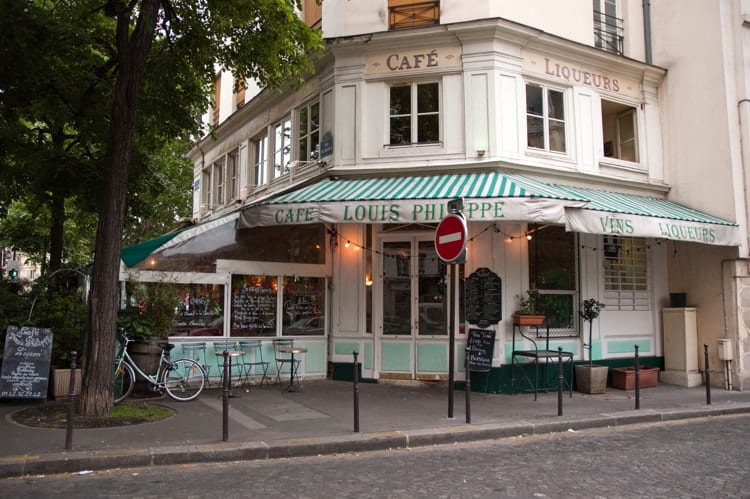
In a city where it’s tough to name a favorite restaurant, this would be mine. Situated opposite the Île Saint-Louis on the Quai de l’Hôtel-de-Ville in the southern corner of the Marais, just at the end of Pont Louis-Philippe from which the place takes its name, this is a typically Parisian bar-restaurant offering traditional French cuisine. Choose a table upstairs and try the frog legs Provençal or stuffed tomatoes with goat cheese to start followed by bœuf bourguignon (the best in the city, in my opinion).
#7: Moulin Rouge
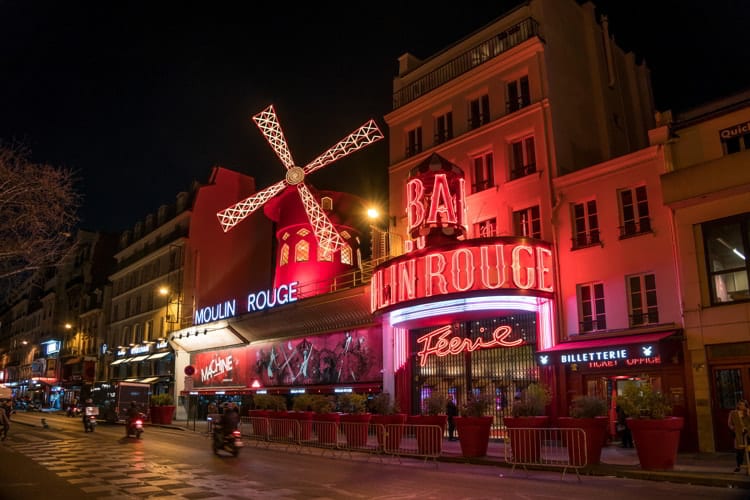
Touristy and tacky were the two words that used to come first to mind when someone would mention the Moulin Rouge. Then, last summer, a friend invited me to see the show. It’s a great night out. Yes, touristy… but not tacky.
The wait staff does an excellent job managing the big crowds. The food was better than you’d expect given the context, dinner comes with a bottle of champagne, and the show was almost Vegas-worthy.
Most memorable for me was the near-naked lady swimming around inside the water-filled clear acrylic box on stage with a boa twice her size.
The can-can was fun, too.
Even if you don’t spring for dinner and a show at the Moulin Rouge (it’s not a cheap date), take the metro to this part of town to experience Paris’ bawdy, racy side.
This is the neighborhood Toulouse-Lautrec made famous with his posters of the local working girls. Today it feels more like Greenwich Village than a red-light district.
When we’re at home in Paris, it’s also from where I write. Our little Paris operation is here in Paris’ city on the hill… which Lief and I continue to delight in getting to know better day by workaday.
Until next time,
Kathleen Peddicord
Founding Publisher, Overseas Opportunity Letter







